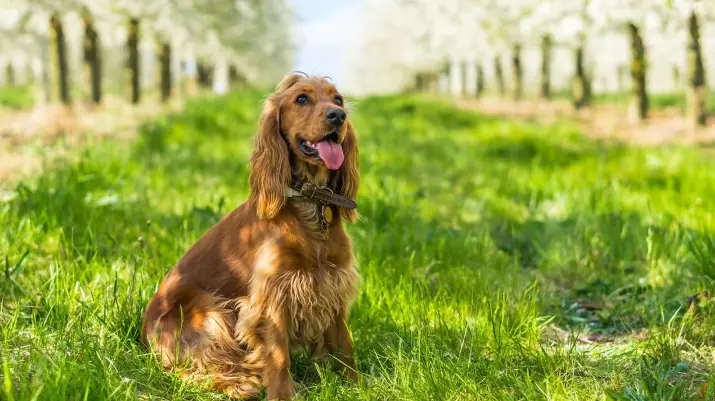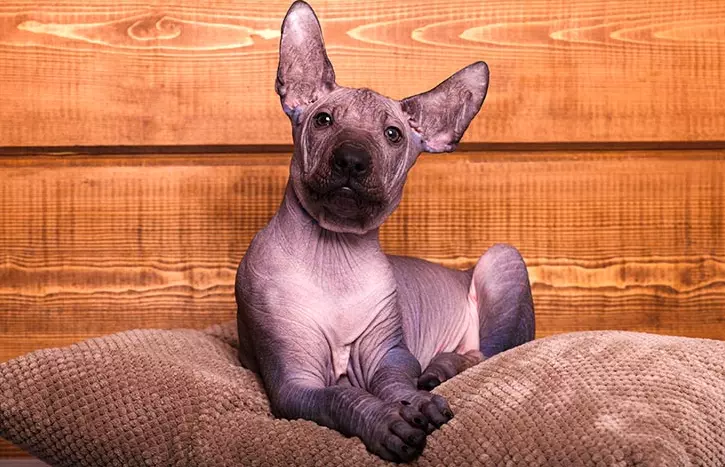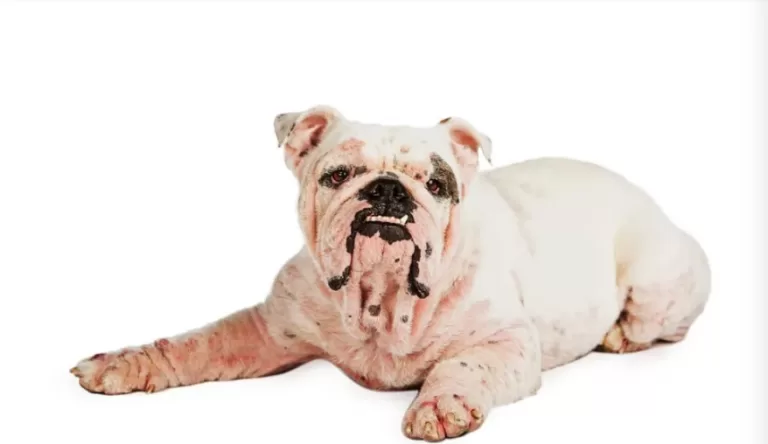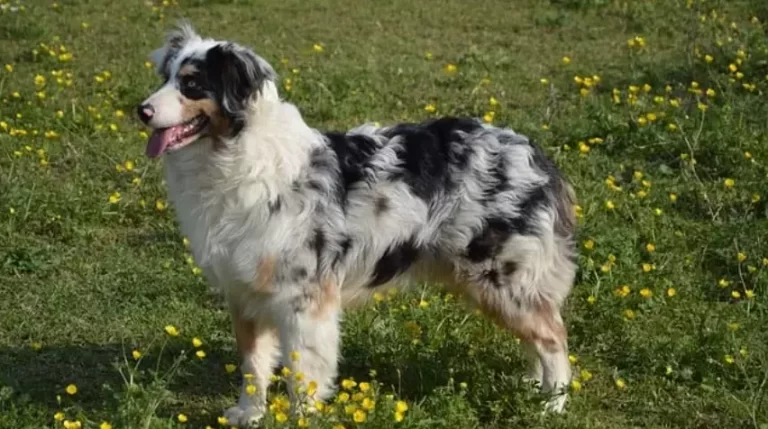Worst Dog Breeds For Allergies?
Table of Contents
When it comes to allergies, dog owners are at risk. They can develop allergies to the things that their dogs eat and also to the things that dogs contact. These allergies can range from seasonal allergies to respiratory allergies.
It would help if you defended yourself and your family against pet allergies. Before adopting your next dog, you should understand how to identify dog allergies because some dog breeds are more susceptible to allergies than others.
Some people experience sneezing, watery eyes, coughing, rashes, and hives, and their noses may even become itchy.
In this essay, I’d like to give some facts on the Worst Dog Breeds For Allergies? so you can make an educated decision when adopting your new dog.
What Causes Dog Allergies?
Many factors can cause allergies. These include genetic factors, pollen, dust mites, bacteria, dog saliva, mold, cats, and dog dander. It is also common for one allergy to cause another allergy to occur. For example, if you are allergic to tree pollen, you may react to grass pollen because they are close relatives.
Dog allergies are one of the most common allergies. When a person diagnoses an allergy to dogs, Vet usually observes three things: a history of asthma, allergies to food, and environmental exposures such as dust, pollens, and molds.
The Vet may also test for other environmental allergens such as mold spores, pet dander, and cat dander. According to the National Asthma Survey, nearly 10% of children and 2-15% of adults are allergic to dogs. The prevalence of dog allergies increases yearly as pets become more common.
Symptoms of Dog Allergies
Symptoms of Dog Allergy can range from mild to severe. Mild reactions include a runny nose, watery eyes, and an itchy throat. These symptoms will often go away after a few hours or even days.
Severe allergic reactions include hives, wheezing, breathing difficulties, vomiting, diarrhea, and nausea. Symptoms will usually appear within 15 to 2 hours of exposure to the allergen.
In extreme circumstances, the response might be fatal. Many factors influence the intensity of the allergic reaction, including the number of pets present, the health of the pet’s immune system, and the quantity of exposure.
Worst dog breed for allergies:
English Bulldog
- Lifespan: 8–10 years
- Temperament: Docile, friendly, willful
- Shedding: Moderate shedder
This breed of dog is the most likely to cause allergies. They tend to be very sensitive to dust mites and produce excessive amounts of dander, which can cause allergy-like symptoms.
There have been numerous reports in which dog owners have complained about their English bulldog causing allergy problems. This dog’s allergy symptoms include sneezing, watery eyes, itching, skin irritation, and asthma.
Basset Hound
- Lifespan: 10–12 years
- Temperament: Tenacious, affectionate, devoted
- Shedding: Moderate to heavy shedder
Basset Hounds are often allergic to both pollen and dust mites. They shed a lot of furs that can get into the air, making it hard to keep the home clean and free from allergens. Dog allergies can be serious or fatal. Dogs with allergies are much more prone to respiratory conditions like asthma.
Pugs
Pugs are prone to trigger allergies because they shed very heavily and have long hair. If the fur gets into the air, you will be exposed to it, and your chances of developing allergies are higher than usual. Some people who have allergy problems with their pugs can even be allergic to the saliva of their pets.
Labrador Retriever
- Lifespan: 12–13 years
- Temperament: Trusting, agile, even-tempered
- Shedding: Heavy shedder
Labrador retrievers are prone to allergies and other respiratory problems. The fur on these dogs is extremely long and sheds heavily, which causes them to produce a lot of hair dust. This makes them more susceptible to allergies than other breeds.
Siberian Husky
Life span: 12 – 15 years
Temperament: Friendly, Outgoing, Intelligent, Alert, Gentle
Shedding: Heavy
Siberian husky’s thick double coat sheds heavily, so keeping clean and free from allergen exposure can be difficult. Their fur is very short and dense, and their coats can contain high amounts of dander.

Rhodesian Ridgeback
Life span: 11 – 14 years
Temperament: Friendly, Alert, Energetic, Loyal
Shedding: Heavy
A Rhodesian ridgeback can be quite an allergy culprit because it sheds heavily, making it a good breeding ground for allergens. Its dense, short hair is prone to matting, so if you have a Rhodesian ridgeback, it is best to brush it daily or apply a weekly topical treatment to reduce its dander levels.
Great Dane
Life span: 9 – 13 years
Temperament: Friendly, Intelligent, Energetic, Alert, Independent, Athletic
Shedding: Light
The great Dane is an extreme shedding dog that can cause a lot of allergies. They usually have a thick, wavy coat that sheds heavily, making it easy for allergens to collect. The great Danes are one of the most allergenic breeds, so if you need a new furry friend, this may not be the breed for you.
Cocker Spaniel
Life span: 11 – 13 years
Temperament: Intelligent, Amiable, Outgoing, Affectionate, Gentle, Tolerant, Playful, Charming
Shedding: Heavy
Cocker spaniels shed heavily, so keeping clean and free from allergen exposure can be difficult. Their coats are short and dense, and their fur contains high dander.
Boxer
Life span: 10 – 12 years
Temperament: Intelligent, Loving, Affectionate, Active, Energetic, Loyal
Shedding: Heavy
The boxer is one of the most allergenic dogs. They shed heavily, and their coats contain high amounts of dander. The boxers are one of the easiest breeds to train and are very friendly with strangers, but they are not hypoallergenic.
The Doberman
Life span: 9 – 15 years
Temperament: Friendly, Intuitive, Sociable, Alert, Amiable, Intelligent, Alert, Playful
Shedding: Heavy
The Doberman has a thick, double coat that sheds heavily. Because of its dense, double coat, the Doberman can be very sensitive to heat and cold, causing them to overheat or under-cool. This makes them prone to severe allergies.
Dachshund
Life span: 6 – 12 years
Temperament: Friendly, Smart, Energetic, Active, Intelligent, Loving, Amiable
Shedding: Moderate
Dachshunds are known to be high-strung, nervous, and high-energy dogs. Although they shed not as much as other dogs, their fur has more oil than the average dog. This makes it extremely easy to get dirt and dander into the coat, which causes skin allergies in allergy sufferers.
Chihuahua
Life span: 2 – 10 years
Temperament: Friendly, Intelligent, Active, Calm, Intuitive, Sensitive, Lively, Amiable
Shedding: Moderate
Chihuahuas are a renowned miniature dog breed. They have a long, thin coat that permits them to shed. Because they are not a hypoallergenic dog breed, they are also prone to allergies and skin disorders.
How to prevent allergies if your pet is not a hypoallergenic dog breed
If your Canine is a kind that is more susceptible to allergies, the best way to avoid allergies is to follow these instructions:
- The best approach to prevent allergic reactions to your dog is by keeping him inside during the pollen season. Please do not allow him to go out in areas where he will inhale the pollen. This may include the garden, the grassy areas, and the park.
- Call your Vet immediately if your dog develops any signs of coughing, sneezing, or breathing difficulties. A veterinarian may prescribe an antihistamine for the dog, such as Benadryl, or anti-inflammatory medication, such as Rimadyl, for an itchy eye or nasal discharge.
- Allergic dogs should be bathed at least once a week. Bathing helps remove oils from the dog’s fur, making it easier to remove dander. Bathing your dog will also help keep his coat clean and healthy.
- It is important to feed your dog a hypoallergenic diet. The best way to maintain your dog healthier is to feed him a diet high in natural nutrients. These ingredients will help to prevent skin infections and allergies. The best type of food to feed your dog is one that is made with salmon or tuna. Feed your dog fish oil to help to keep his skin supple and free of problems.
Frequently Asked Questions
What is the least allergenic dog breed?
What types of dogs are allergy free?
Poodle. Carol Howell / EyeEm / Getty Images. …
Maltese. Mixed to / Getty Images.
Chinese Crested. Ekaterina Gorokhova / Getty Images. …
Bichon Frise.
Portuguese Water Dog.
Basenji.
Afghan Hound.
What is the calmest non-shedding dog?
Calm Dogs: Xoloitzcuintli.
Big Calm Dog Breed: Newfoundland.
Calm Dog Breed that Doesn’t Bark: Bulldog.
Easy-Going Dog Breed: Golden Retriever.
Chill Dog breed: Greyhound.
Most Popular Calm Dog: Labrador Retriever.
Surprisingly Calm, Quiet Dog Breed: Pug.
What’s the easiest dog to own?
Golden Retriever.
Labrador Retriever.
German Shepherds.
Cardigan Welsh Corgi.
Papillon.
Shetland Sheepdog.
These breeds are friendly, easy to train, and good for active kids and older pets who want to engage in fun activities. It also has a good appetite and great sleeping habits, making it a popular choice for families.
Which Canine can be left alone the longest?
What dog does not need a lot of attention?
What is the cheapest hypoallergenic dog breed?
Conclusion
The worst dog breeds for allergies are purebred dogs. They tend to have more allergies because they often do not carry natural immune systems. Their genes have been selected for specific traits over hundreds of years.
As a result, their immune systems are less diverse than those of other breeds. Other factors, such as environmental exposure, play a role in allergy development in dogs. Some experts believe genetics plays a larger role in dog allergies than previously thought.
You can take several steps to assist your pet’s immune system in developing a more diversified immune response. If your dog is allergic to anything like cat fur and pollen, there are several ways to assist him in gaining tolerance to it.
Give your pet dogs the proper food and attention to keep them healthy and happy. If your dog has allergies, consult your veterinarian to learn how to prevent future incidents and keep them happy and healthy.
Do you have any thoughts on which dog breeds are good? Share your thoughts in the comments below.
- 1xbet официального Сайт Казино Игровыми Автоматами 1хбет - April 17, 2024
- Бездепозитные Бонусы За Регистрацию и Онлайн Казино 202 - April 9, 2024
- Yeni Deneme Bonusu Veren On Line Casino Siteler - January 31, 2024








